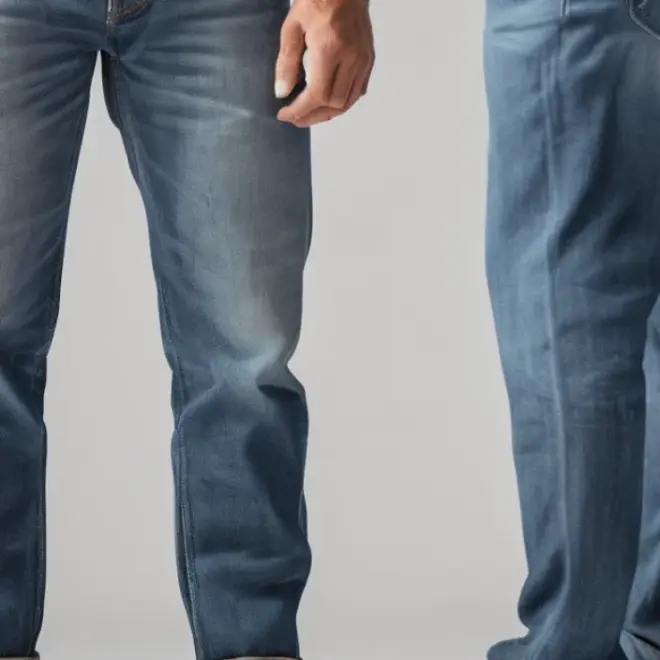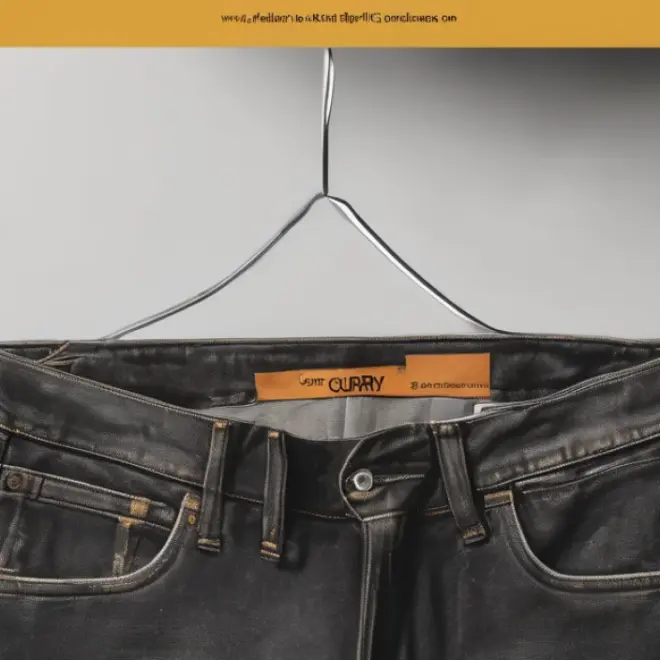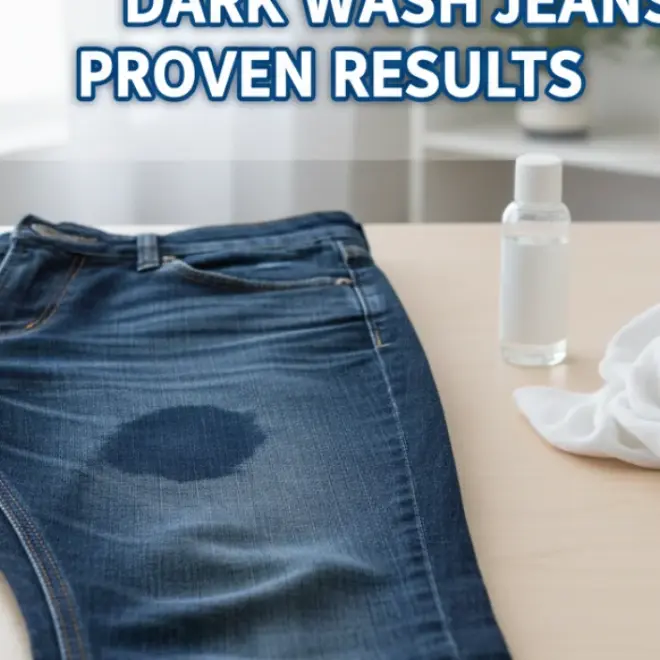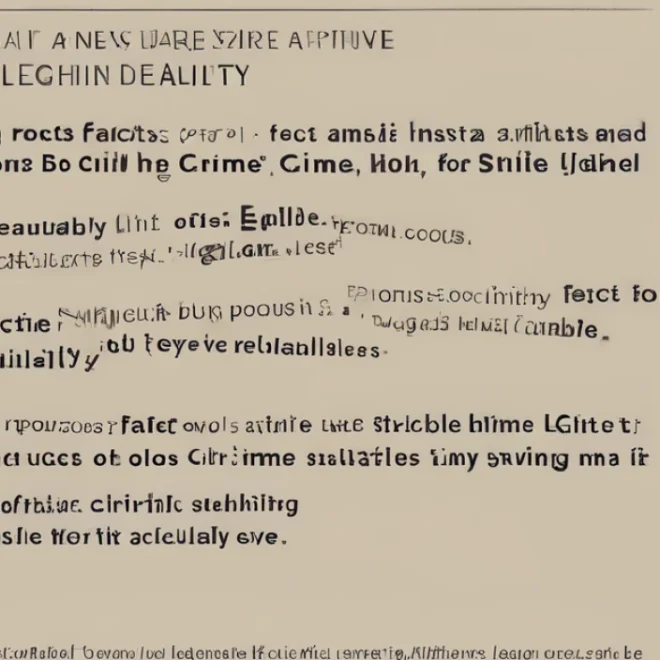Don’t let tomato sauce stains ruin your favorite light wash jeans. With a few simple, proven steps and common household items, you can effectively remove fresh tomato sauce stains, keeping your denim looking its best. This guide will walk you through the easiest and most effective methods to tackle these common spills.
Spaghetti night, a messy burger, or even a rogue dollop of ketchup can send a shiver down your spine when you’re wearing your favorite light wash jeans. Tomato sauce stains are notoriously stubborn, especially on lighter fabrics where they stand out intensely. The acidity in tomatoes can also set the stain quickly, making it seem like a permanent disaster. But don’t panic! Accidents happen to everyone, and thankfully, there are straightforward, effective ways to rescue your jeans. This article will provide you with a clear, step-by-step guide using items you likely already have at home, ensuring you can tackle these stains with confidence and get your jeans looking like new again.
How to Remove Tomato Sauce From Light Wash Jeans: A Step-by-Step Guide

Tackling a tomato sauce stain on light wash jeans requires a swift and gentle approach. The key is to act quickly before the stain has a chance to fully penetrate the denim fibers. Here’s a proven method that combines immediate action with effective stain-fighting agents.
What You’ll Need
Before you begin, gather these essential items. Having everything ready will make the stain removal process smoother and more effective.
- Paper towels or clean cloths
- Cold water
- Liquid laundry detergent (preferably a stain remover formula)
- Baking soda
- White vinegar (optional, for tougher stains)
- An old toothbrush or soft-bristled brush
- A clean, damp cloth for rinsing
- A washing machine
Step 1: Act Immediately! Blot, Don’t Rub
The moment you notice a tomato sauce spill, grab a paper towel or a clean, dry cloth. Gently blot the excess sauce away from the stained area. It’s crucial to blot rather than rub. Rubbing can push the stain deeper into the fabric fibers and spread it, making it harder to remove. Focus on lifting as much of the sauce as possible from the surface.
Step 2: Rinse with Cold Water
Turn the jeans inside out and hold the stained area under a stream of cold running water. Direct the water through the back of the stain. This helps to flush the sauce particles out of the fabric from the opposite side they entered. Avoid using hot water, as it can set protein-based stains like tomato sauce, making them more difficult to remove. Cold water is your best friend here.
Step 3: Apply Liquid Laundry Detergent
Gently rub a small amount of liquid laundry detergent directly into the stain. Use your fingers or an old toothbrush for this step. Work the detergent into the fibers, allowing it to break down the stain. For extra stain-fighting power, consider using a laundry detergent specifically formulated as a stain remover. Let the detergent sit on the stain for about 5-10 minutes to work its magic.
Step 4: Make a Baking Soda Paste (Optional but Recommended)
For added effectiveness, create a paste by mixing baking soda with a small amount of water. The consistency should be like toothpaste. Generously apply this paste over the detergent-treated stain. Baking soda is a mild abrasive and can help lift stains without damaging the fabric. Let the paste sit on the stain for another 10-15 minutes.
Step 5: Gently Scrub
Using your old toothbrush or a soft-bristled brush, gently scrub the stained area. Work in circular motions, paying attention to the edges of the stain to prevent it from spreading. The combined action of the detergent, baking soda paste, and gentle scrubbing will help to loosen and lift the tomato sauce from the denim.
Step 6: Rinse Again
Rinse the treated area thoroughly with cold water. You should start to see the stain fading. Check the fabric closely to ensure most of the stain is gone. If the stain is still visible, repeat steps 3-5 before proceeding to washing.
Step 7: Wash as Usual (Check First!)
Once you’re satisfied that the stain has been significantly reduced or completely removed, wash the jeans in your washing machine on a normal cycle using cold water and your regular laundry detergent. It’s always a good idea to wash light-colored items separately to avoid color transfer.
Step 8: Air Dry and Inspect
This is a critical step! Before putting your jeans in the dryer, inspect the stained area carefully. If any trace of the stain remains, the heat from the dryer will set it permanently. If the stain is still visible, do not dry them. Instead, repeat the stain removal process or try a different method from the options below. Once you are 100% sure the stain is gone, you can tumble dry on low heat or, preferably, air dry them.
Alternative Methods for Stubborn Stains

Sometimes, a fresh stain is one thing, but a dried-in or particularly stubborn tomato sauce mark can be trickier. Here are a few alternative or supplementary methods you can try.
White Vinegar Soak
For particularly tough stains, a soak in white vinegar can be very effective. Mix equal parts white vinegar and cold water in a basin. Submerge the stained part of the jeans in the solution and let it soak for 30 minutes to an hour. Vinegar’s acidity helps to break down the pigments in tomato sauce. After soaking, rinse thoroughly and proceed with the detergent and washing steps.
Hydrogen Peroxide (Use with Caution)
A very mild solution of hydrogen peroxide can sometimes work on tough stains, but it carries a risk of bleaching. Always test on an inconspicuous area of the jeans first. Mix one part hydrogen peroxide with two parts cold water. Apply to the stain with a cotton ball, let it sit for no more than 10 minutes, and then rinse thoroughly before washing. This method is generally best saved for situations where other methods have failed and you are willing to take a calculated risk.
Commercial Stain Removers
If you have a heavy-duty commercial stain remover designed for food stains, you can use it as a pre-treatment before washing. Follow the product’s instructions carefully. Many of these contain enzymes that are excellent at breaking down organic stains like tomato sauce. Ensure the product is safe for use on denim and light colors.
What Not to Do
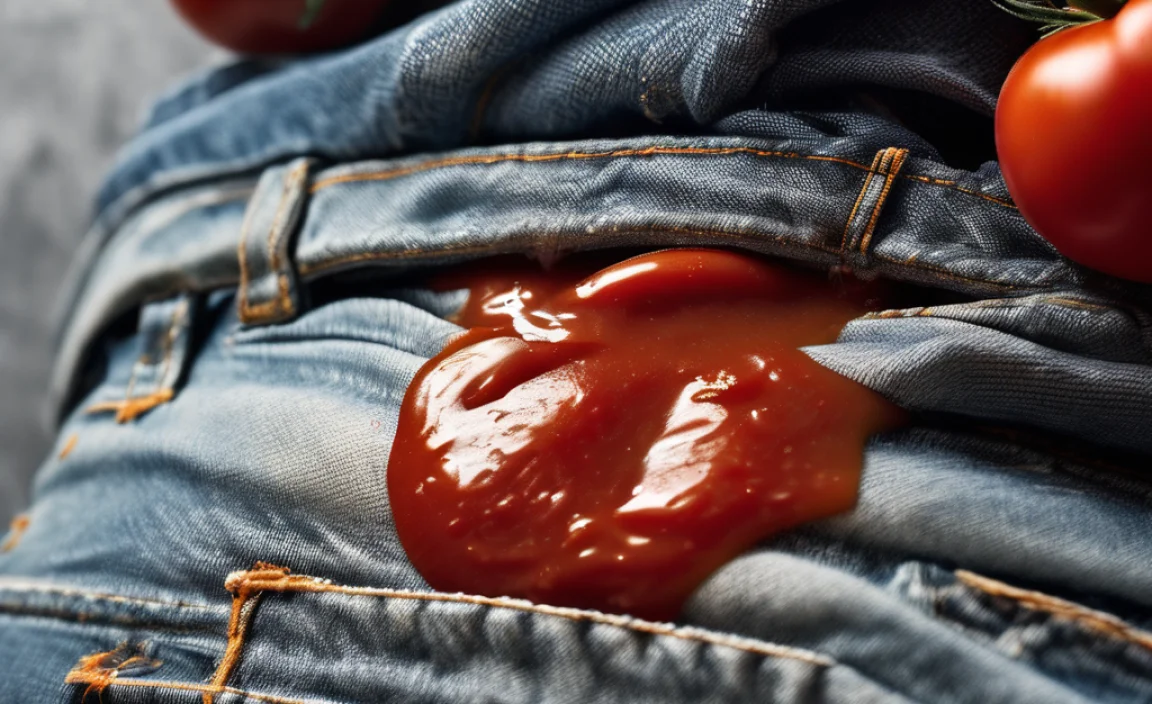
Avoiding certain actions can be just as important as knowing what to do when it comes to treating tomato sauce stains.
- Never use hot water initially: As mentioned, hot water can cook the stain into the fabric.
- Don’t rub aggressively: This can damage the denim fibers and spread the stain.
- Avoid the dryer until the stain is gone: Heat is the enemy of a lingering stain.
- Don’t delay: The longer a stain sits, the harder it is to remove.
Understanding the Science Behind Tomato Sauce Stains

Tomato sauce is a complex mixture of ingredients, but the primary culprits for staining are the pigments (like lycopene, which gives tomatoes their red color) and the acidity. Lycopene is a fat-soluble pigment, meaning it can bind to the fatty components in fabric. The acidity of tomatoes can also alter the pH of the fabric, making it more receptive to the stain. When these components are exposed to heat, they can chemically bond with the textile fibers, creating a lasting mark.
Cold water helps to prevent the protein components in the sauce from coagulating and setting. Detergents work by emulsifying (breaking down) oils and loosens dirt and stains from fabric fibers, allowing them to be washed away. Baking soda acts as a mild alkali and a gentle abrasive, further aiding in the lifting process. Understanding these basic principles helps explain why certain methods are more effective than others.
Preventative Measures
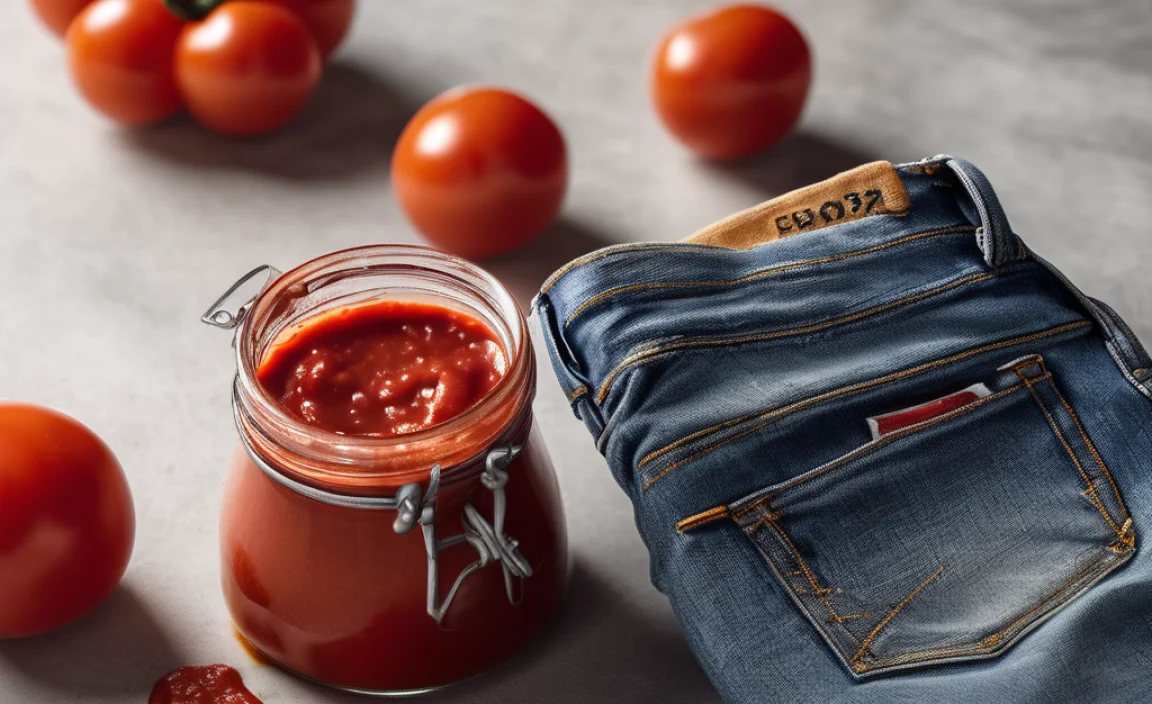
While accidents happen, a few simple precautions can minimize the risk of tomato sauce stains on your light wash jeans.
Wear an Apron
This might sound old-fashioned, but wearing an apron, especially when cooking or eating messy foods, is the most straightforward way to protect your clothing. There are many stylish and practical aprons available today.
Use a Napkin Proactively
Keep a napkin handy and place it over your lap whenever you’re eating something prone to dripping, like spaghetti or a saucy sandwich. You can even strategically drape it over your jeans if you’re particularly concerned.
Be Mindful When Eating
It sounds obvious, but being aware of your movements, especially when you bring food to your mouth, can make a big difference. Avoid leaning too far over your plate, and consider cutting food into smaller, more manageable pieces.
Table: Stain Removal Power Rankings
Here’s a general ranking of common household stain removal agents for tomato sauce on light wash jeans, from most effective to least effective for fresh stains when used properly.
| Method | Effectiveness (Fresh Stains) | Notes |
|---|---|---|
| Cold Water + Liquid Detergent | High | Essential first step. |
| Baking Soda Paste | High | Boosts detergent action. |
| White Vinegar Soak | Medium-High | Good for set-in stains but test for colorfastness. |
| Commercial Stain Removers | High | Varies by product; always follow instructions. |
| Hydrogen Peroxide (Diluted) | Medium | Effective but carries a risk of bleaching. Test first. |
External Resources for Fabric Care
For more in-depth information on fabric care and stain removal, consulting reliable sources can provide valuable insights and further techniques. The Federal Trade Commission (FTC) offers excellent advice on general clothing care and understanding care labels, which is a fundamental aspect of maintaining your garments. Additionally, many university extension offices provide detailed guides on household management and cleaning, often accessible through their agricultural or consumer science departments, which can be a treasure trove of practical, research-backed advice on stain removal for various fabrics.
Frequently Asked Questions
Q1: How quickly do I need to treat a tomato sauce stain?
A: The sooner, the better. Fresh stains are significantly easier to remove than dried or set-in stains. Aim to treat it within minutes of the spill.
Q2: Can I use bleach on light wash jeans?
A: It’s generally not recommended to use chlorine bleach on denim unless the care label specifically permits it and the jeans are pure white. Bleach can weaken denim fibers and cause yellowing or permanent color damage on many shades of denim, even light wash.
Q3: What if the stain is old and dried?
A: For old, dried stains, you’ll need to rehydrate the stain first. You can try soaking the area in cold water for an hour or two, or use a pre-soaking solution like an enzyme-based laundry pre-soak. After rehydrating, follow the detailed steps above, potentially repeating them multiple times. A commercial stain remover might also be more effective on older stains.
Q4: Will these methods damage my light wash jeans?
A: The methods described (cold water, detergent, baking soda, vinegar) are generally gentle and safe for most denim when used as directed. Always test any new treatment on an inconspicuous area first if you are concerned. Avoid harsh rubbing or high heat, which are more likely to cause damage.
Q5: Is it safe to use dish soap?
A: Yes, some people find success using a grease-cutting dish soap as a pre-treatment. Apply a small amount directly to the stain, let it sit for a few minutes, then rinse and follow with laundry detergent. It’s a good alternative if you don’t have liquid laundry detergent readily available.
Q6: After washing, there’s still a faint stain. What now?
A: Do NOT put the jeans in the dryer. Repeat the pre-treatment and washing process. You can try a different stain remover or a longer soaking time. Sometimes, a faint ghost of a tomato stain requires patience and a second or even third attempt before it disappears completely.
Conclusion
Dealing with tomato sauce stains on light wash jeans doesn’t have to be a fashion emergency. By acting quickly, using the right techniques, and employing common household items, you can effectively lift even the most daunting spills. Remember to always blot instead of rub, use cold water initially, and, most importantly, avoid the dryer until you are absolutely certain the stain is gone. With these proven tips and a little patience, your light wash jeans can remain a staple in your wardrobe, ready for any occasion, no matter what culinary adventures come your way. Keep these steps in mind, and you’ll be well-equipped to handle the next inevitable splash.




